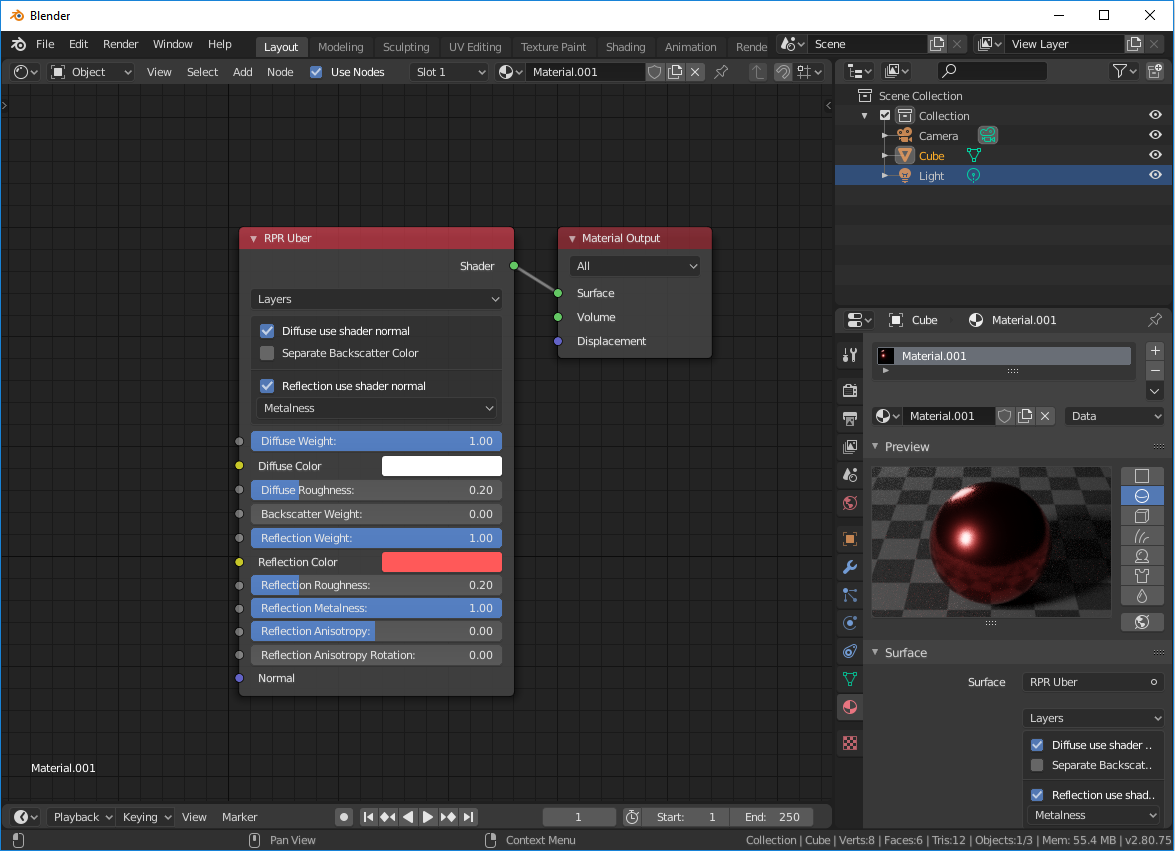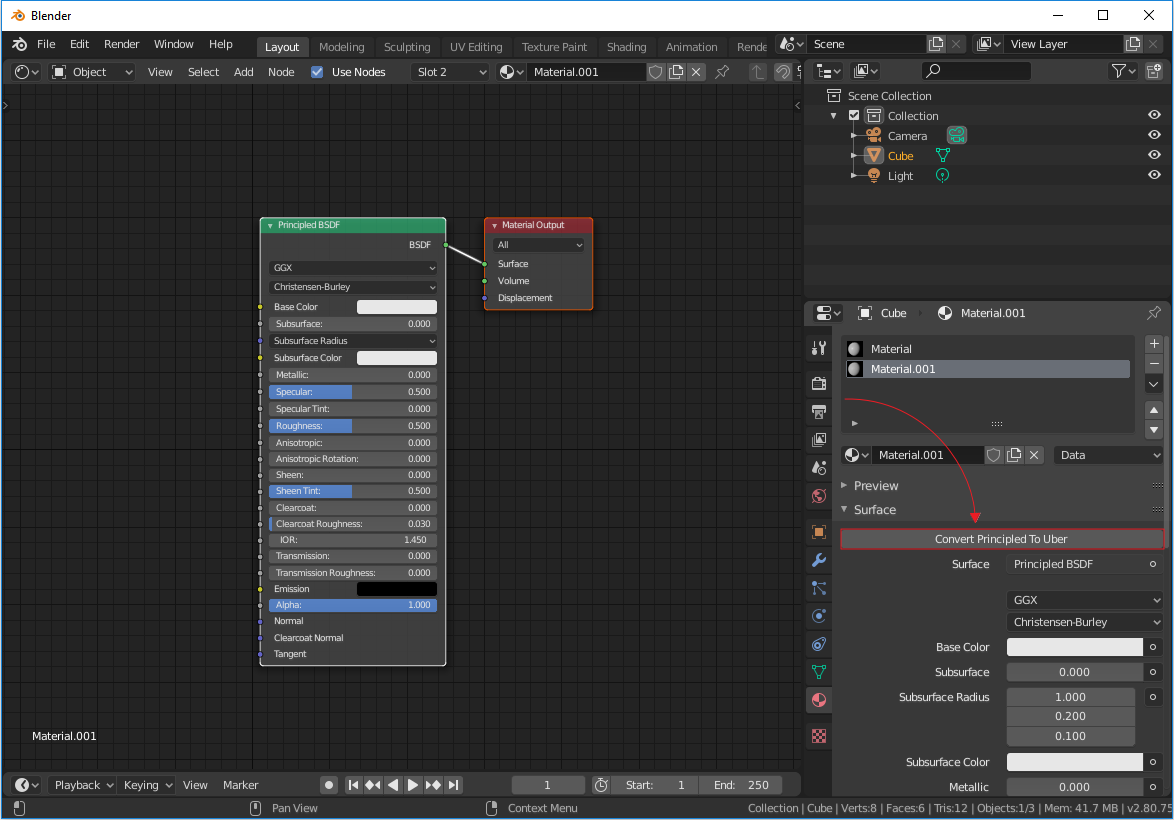Using the Uber Shader in Blender
The Uber Shader is a multi-purpose shader intended for creating a wide range of real-world materials in Blender. Covering all of the material’s effects that artists usually need, the Uber Shader allows the creation of materials of virtually any complexity.
The Uber Shader consolidates a number of components, or layers, that group certain properties of physical materials. You can mix these layers in the material to achieve the desired result. In AMD Radeon ProRender for Blender, the Uber material can include the following layers:
Enabling a component activates its properties and allows you to adjust the settings of the material’s layer. Note that the Uber Shader comes with physically correct default values and soft limits for the material’s properties. Using any values below or above these limits will generally distort the physical correctness of the material.
To learn about the settings available for the material’s layers, refer to the sections that describe the Uber Shader components.
Considerations and Limitations
You may wish to consider the following before you start to create new materials using the Uber Shader:
When the Subsurface component is enabled, diffuse backscattering is activated automatically (if the backscattering weight value is zero), as SSS requires the material to transmit light.
In AMD Radeon ProRender for Blender, the Uber Shader comes without the Displacement component. To displace the surface of a mesh, use the native Blender displacement methods. For details, see the Surface Displacement section in the documentation.
Anisotropic reflections work by biasing roughness in one direction. Thus, it is necessary to have some amount of roughness for results in changing the anisotropic setting.
Uber Material Examples
To see examples of how to use the Uber Shader, you can start with the materials available in the Material Library. All the materials in this Library rely on the Uber Shader and could be good options to get started. Simply import a material from the library and try playing with its presets to achieve a better understanding of how the Uber Shader works.
Adding an Uber Material
To add an Uber material for an object:
Create a new material as described in the Adding Materials section.
Switch to the Shader Editor.
Remove the default Principled BSDF node.
In the editor’s Add menu, select Shader > RPR Uber or search for the RPR Uber node.
Connect the RPR Uber node to the Material Output node.
To add a new layer to the Uber material, click Layers in the RPR Uber node, and select the check box next to the required layer. Adjust the layer settings as required.
For details of the input types supported, see the documentation topics on Uber components.

Converting Principled BSDF to RPR Uber Material
The default material assigned to an object is Blender’s Principled BSDF. The Principled BSDF material is fully supported by AMD Radeon ProRender. However, you can easily convert this material to Radeon ProRender’s native RPR Uber material, if you find the latter more convenient or appreciate the advanced features of Uber, or if you simply wish to evaluate the RPR Uber Shader and get started with it quicker and more easily.
To convert the Principled BSDF material to RPR Uber Shader material:
In the scene, select an object that has the Principled BSDF material assigned to it.
In the Blender Properties editor, switch to the Material tab.
Expand the Surface panel.
Click the Convert Principled to Uber button.
If necessary, adjust the RPR Uber material settings as described in the Uber Shader section in the documentation.
